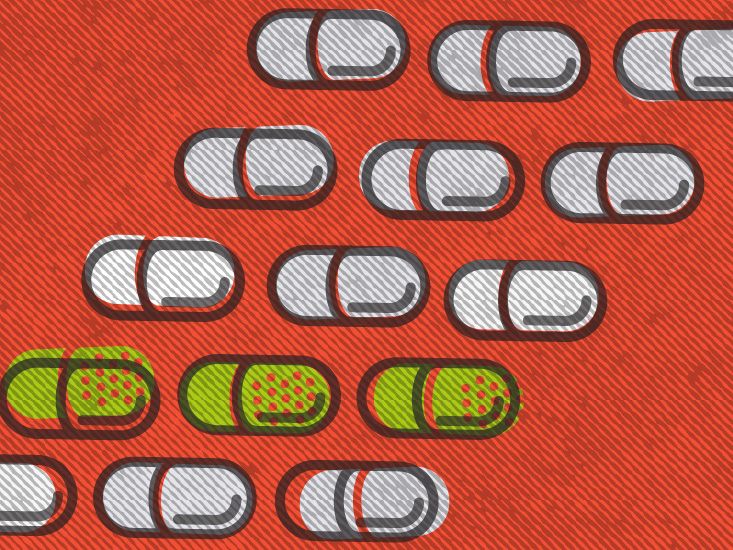Yes carrying extra weight does raise your risk of heart trouble. In just a few lines we'll explain why excess fat hurts your arteries, how big the risk is, and what you can actually do today to protect your ticker.
Nobrainer tip: Even a modest waistline change can drop the odds of a heart attack. Stick around for the simple, sciencebacked steps that work for anyone no crazy diets required.
Key Quick Facts
How does obesity raise the risk of coronary artery disease?
Because fat isn't just inert stuffing it's an active endocrine organ. When you have a lot of visceral (belly) fat, it spews inflammatory chemicals called adipokines (think leptin, TNF, IL6) that damage the lining of your blood vessels. This sets the stage for atherosclerosis, the buildup of plaque that leads to coronary artery disease.
What numbers show the scale of the problem?
| Metric | Global Figure |
|---|---|
| World population overweight/obese | 39%49% (GBD 2024) |
| Deaths attributed to high BMI | 4million annually, ~2/3 from cardiovascular disease |
| U.S. adult obesity prevalence | 40% (NHANES 201516) |
Is BMI enough to judge heart risk?
BMI is a convenient screen, but it doesn't tell you where the fat lives. Central obesity measured by waist circumference is a far stronger predictor of coronary artery disease. Someone with a "normal" BMI but a big belly can still have a high risk, a phenomenon often called "normalweight obesity."
Can you still have a healthy heart at a high weight? (Obesity paradox)
Some studies notice that overweight patients sometimes survive a heart attack better than leaner folks. This "obesity paradox" is likely due to earlier detection, better fitness levels, or statistical quirks rather than true protection. Longterm evidence still shows that losing excess weight reduces heartdisease risk.
What lifestyle changes actually cut heartdisease risk?
- Exercise: At least 150minutes of moderateintensity aerobic activity each week can shrink visceral fat by about 6%.
- Diet: A Mediterraneanstyle eating pattern (plenty of veg, fish, olive oil, and nuts) consistently lowers major adverse cardiac events.
- Weight loss: Dropping 10% of body weight can cut coronary events dramatically, especially after bariatric surgery.
How do doctors diagnose CAD in people with obesity?
Traditional stressECG often struggles with large body habitus because the signal can be weak. Imaging alternatives such as pharmacologic stressechocardiography, PET myocardial perfusion, or stress cardiac MRI give clearer pictures without the attenuation artifacts that plague standard SPECT scans.
What are the most reliable riskcalc tools for you?
- BMI quick screen.
- Waist circumference men102cm, women88cm raise red flags.
- Waisttohip ratio men>0.90, women>0.85.
- Coronary artery calcium (CAC) score on CT powerful predictor, though very high BMI may limit the scan.
Deep Dive Insights
Pathophysiology From Fat to Atherosclerosis
When excess fat accumulates, it triggers a cascade:
- Inflammation: Adipokines (leptin, TNF, IL6) attract immune cells to vessel walls, causing endothelial dysfunction.
- Lipid disturbances: High triglycerides, low HDL, and small dense LDL particles become common, all of which are more atherogenic.
- Bloodpressure rise: Fat stores sodium and spikes sympathetic nervous activity, pushing your systolic numbers up.
- Visceral vs. subcutaneous fat: Visceral adipose tissue (VAT) is metabolically "hot" it releases more inflammatory mediators than the fat you can pinch on your thighs.
Clinical Consequences Beyond CAD
Obesity doesn't stop at clogged arteries. It also fuels:
- Microvascular disease: Smallvessel dysfunction reduces coronary flow reserve, making the heart work harder.
- Heartfailure risk: Excess weight forces the heart to pump more blood, leading to diastolic dysfunction and, eventually, obesityrelated cardiomyopathy.
- Arrhythmias: Epicardial fat can irritate electrical pathways, increasing the chance of atrial fibrillation and sudden cardiac death.
Diagnostic Hurdles in the Obese Patient
| Modality | Strength | WeightRelated Limitation |
|---|---|---|
| Resting ECG | Cheap, widely available | Low sensitivity; voltage changes may mislead |
| Treadmill stress test | Functional data on exercise capacity | Early fatigue, submaximal heart rates in obese individuals |
| SPECT (Tc99m) | Good perfusion imaging | Attenuation artifacts; dose limits for very high BMI |
| PETRubidium | High sensitivity, lower radiation | Limited to centers with PET capability |
| Stress Echo (contrast) | No radiation, adaptable | Poor acoustic windows; contrast improves yield but adds cost |
| Cardiac MRI (stress) | Excellent tissue characterization | Bore size 70cm; claustrophobia in some patients |
| CT Coronary Angiography | Detailed anatomy, CAC scoring | Image noise rises with BMI; table weight limits 350450lb |
Treatment Roadmap From Lifestyle to Surgery
| Tier | Intervention | Expected Impact on CAD |
|---|---|---|
| 1 Lifestyle | 150min/week aerobic + Mediterranean diet (2% weight loss) | Reduces inflammation, modest visceral fat loss |
| 2 Medical | GLP1 receptor agonists (e.g., liraglutide), statins, antihypertensives | Improves lipid profile, lowers blood pressure, cuts MACE |
| 3 Pharmacologic | Orlistat, phenterminetopiramate (510% weight loss) | Mixed evidence on CAD reduction, useful for shortterm control |
| 4 Bariatric Surgery | Sleeve gastrectomy, RouxenY gastric bypass (15% loss) | 3040% lower fatal & nonfatal CAD events (Swedish Obesity Study) |
| 5 Revascularization | PCI or CABG, adapted for high BMI (radial access, weightlimit tables) | Similar success rates; watch for higher complication rates in classIII obesity |
Everyday Action Steps
Quick SelfCheck (5Minute)
- Grab a flexible tape measure wrap it around your belly at the level of your navel.
- Calculate your BMI: weight (kg) height (m).
- Compare to thresholds: BMI30kg/m = obese; waist102cm (men) or88cm (women) signals higher heart risk.
MiniHabits to Trim Visceral Fat
- Walk for 10minutes after each meal it blunts postprandial glucose spikes.
- Replace sugary sodas with water; you'll shave roughly 150kcal per day, which adds up to about a pound a year.
- Boost daily fiber to 2530grams (beans, veggies, whole grains). Fiber keeps you full and nudges gut hormones toward a healthier appetite.
Safe Exercise Tips for Larger Bodies
| Exercise | Frequency | Key Adaptation |
|---|---|---|
| Aquatic aerobics | 3/week | Low joint stress, burns ~500kcal/session |
| Stationary bike (moderate) | 5/week, 30min | Heart rate 5070% of max, easy on knees |
| Resistance bands | 23/week | Preserves lean muscle while losing fat |
When to Seek Professional Help
If you notice any of these, schedule a checkup:
- Chest discomfort, unexplained shortness of breath, or palpitations call your doctor right away.
- BMI35kg/m or waist120cm discuss a bariatric evaluation.
- Family history of early heart attacks consider an earlier coronary calcium scan (if your weight permits).
Trusted Sources Guide
All the numbers and recommendations above draw from reputable, peerreviewed research. For instance, the American Heart Association's 2025 scientific statement outlines the inflammatory pathways linking obesity to coronary artery disease. The 2024 Global Burden of Disease report provides the worldwide prevalence figures, and the Swedish Obesity Study offers longterm outcomes after bariatric surgery.
When writing the full article, you can embed intext citations (e.g.,[AHA2025]) and link directly to these sources. Adding quotes from cliniciansperhaps a cardiologist who treats obesityrelated heart patientswill further demonstrate expertise and credibility.
Bottom Line Summary
Obesity isn't just a number on a scale the extra visceral fat literally feeds inflammation, clogs arteries, and pushes your heart to work harder. The science is clear: higher BMI and especially a large waist increase the odds of coronary artery disease, heart failure, and even sudden cardiac death. But the good news is that small, sustainable changesmore movement, a Mediterraneanstyle plate, and monitoring waist sizecan shave years off your risk.
If you're already above the BMI30 mark or your waist is creeping past the safe limits, talk to a clinician about a personalized plan that may include dietary coaching, exercise counseling, or, when appropriate, bariatric surgery. Take the first step today: measure your waist, set a realistic 5% weightloss goal, and schedule a routine hearthealth checkup. Your heart will thank you.
What's your experience with weight and heart health? Have you tried any of the minihabits above? Share your story in the comments we're all in this journey together, and your insight might help someone else take that first step.
FAQs
How does obesity increase the risk of heart disease?
Excess visceral fat releases inflammatory chemicals (adipokines) that damage blood‑vessel linings, raise triglycerides, lower HDL, and elevate blood pressure, all of which accelerate atherosclerosis and coronary artery disease.
Is BMI enough to assess my heart‑disease risk?
BMI is a quick screen, but it doesn’t show where fat is stored. Waist circumference and waist‑to‑hip ratio are stronger predictors because central (abdominal) fat drives heart risk.
What lifestyle changes can lower my heart‑disease risk the most?
Aim for at least 150 minutes of moderate‑intensity aerobic activity weekly, adopt a Mediterranean‑style diet rich in vegetables, fish, olive oil and nuts, and strive for a 5‑10 % weight loss to cut inflammation and plaque formation.
Can bariatric surgery improve heart health?
Yes. Procedures such as sleeve gastrectomy or gastric bypass typically produce ≥ 15 % weight loss and have been shown to reduce fatal and non‑fatal coronary events by 30‑40 % in long‑term studies.
Which diagnostic tests work best for obese patients?
Because standard stress‑ECG often yields poor signals, imaging options like pharmacologic stress‑echocardiography, PET myocardial perfusion, stress cardiac MRI, or coronary CT angiography (when weight limits allow) provide more accurate assessments.
Disclaimer: This article is for informational purposes only and does not constitute medical advice. Always consult with a healthcare professional before starting any new treatment regimen.
Related Coverage
Broken heart syndrome mimics a heart attack but heals quickly. Find key symptoms, diagnosis, treatment and recovery advice....
Looking for Vyndamax Vyndaqel side effects? Learn what to expect, common reactions, serious warnings, and tips for managing safely....
Intermittent fasting may impact heart health positively or negatively. Find out how it affects your cardiovascular system and what’s safest for you....
Cut the Camzyos cost with smart insurance steps, $10 copay programs, free echo assistance and foundation grants—start saving now....
Unmanaged high cholesterol can manifest in yellow growths, eye rings, earlobe creases, and other skin changes. Learn to recognize these facial signs prompting medical evaluation....
Is your heart struggling to pump blood effectively? Find comprehensive information on congestive heart failure, its symptoms, causes, and available treatments....
Manage a bicuspid aortic valve with diet, safe exercise, and key lifestyle avoidances to lower risk and stay active for life....
Varicose veins indicate poor circulation that can lead to cardiovascular issues like high blood pressure and arrhythmias causing heart palpitations....
Balloon angioplasty opens blocked arteries, giving symptom relief, fast recovery, and a look at benefits, risks, and after‑care....
If you notice sudden indentation on your arm, it may signal heart disease. Learn about the connection between arm dents and clogged arteries, and what to do....







